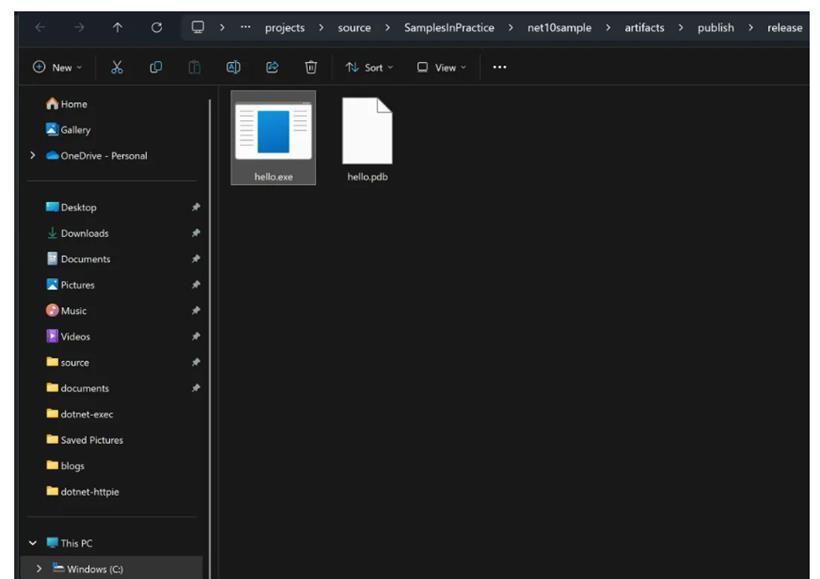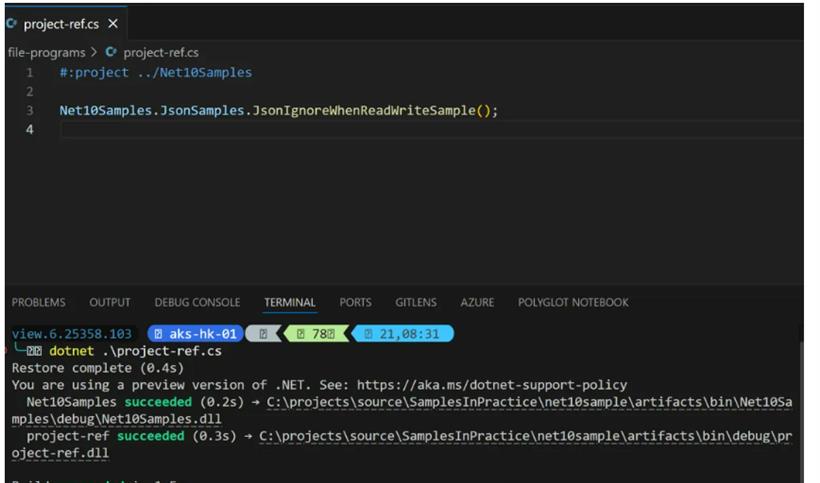- 联系我们
- duidaima.com 版权声明
- 闽ICP备2020021581号
-
 闽公网安备 35020302035485号
闽公网安备 35020302035485号
 闽公网安备 35020302035485号
闽公网安备 35020302035485号
#!/usr/bin/dotnet
Console.WriteLine("Hello .NET");





我们也可以使用在文件中指定 #property PublishAot=false 来不 publish aot,也可以 publish 的时候指定比如 :
dotnet publish hello.cs -p PublishAot=false

#:project ../Net10Samples Net10Samples.JsonSamples.JsonIgnoreWhenReadWriteSample();

# 1. Create a single-file C# app with a shebang
cat << 'EOF' > hello.cs
#!/usr/bin/env dotnet
Console.WriteLine("Hello!");
EOF
# 2. Copy it (extensionless) into ~/utils/hello (~/utils is on my PATH)
mkdir -p ~/utils
cp hello.cs ~/utils/hello
# 3. Mark it executable
chmod +x ~/utils/hello
# 4. Run it directly from anywhere
cd ~
hello

#:property LangVersion=preview
Console.WriteLine("From [CallerFilePath] attribute:");
Console.WriteLine($" - Entry-point path: {Path.EntryPointFilePath()}");
Console.WriteLine($" - Entry-point directory: {Path.EntryPointFileDirectoryPath()}");
Console.WriteLine("From AppContext data:");
Console.WriteLine($" - Entry-point path: {AppContext.EntryPointFilePath()}");
Console.WriteLine($" - Entry-point directory: {AppContext.EntryPointFileDirectoryPath()}");
staticclassPathEntryPointExtensions
{
extension(Path)
{
public static string EntryPointFilePath() => EntryPointImpl();
public static string EntryPointFileDirectoryPath() => Path.GetDirectoryName(EntryPointImpl()) ?? "";
private static string EntryPointImpl([System.Runtime.CompilerServices.CallerFilePath] string filePath = "") => filePath;
}
}
staticclassAppContextExtensions
{
extension(AppContext)
{
publicstaticstring? EntryPointFilePath() => AppContext.GetData("EntryPointFilePath") asstring;
publicstaticstring? EntryPointFileDirectoryPath() => AppContext.GetData("EntryPointFileDirectoryPath") asstring;
}
}
